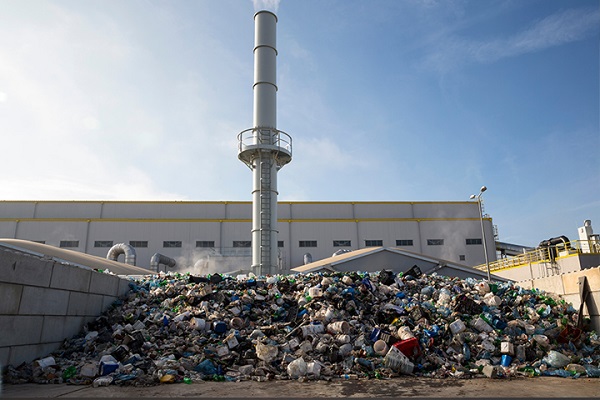The number of WtE plants in the developed countries has been increasing as they can no longer rely on the developing countries to deal with the disposal of their waste. Now that several Asian countries have made clear that the developed countries have to mind their waste in their own backyard, the need for advanced and efficient WtE systems have propelled drastically.
According to a research firm, Allied Market Research, the global waste to energy market is projected to reach $27.7 billion by 2025, with a CAGR of 6.1% during the period 2018–2025. The major market players such as Waste Management Inc., C&G Environmental Protection Holdings, and Babcock & Wilcox Enterprises, Inc. have invested a huge pile of money to launch novel WtE systems that can reduce the volume of the waste by up to 90%.
B&W turns over renewable plant project
Babcock & Wilcox Enterprises, the global leader in advanced and environmental technologies and services for power and renewable markets, recently announced that its Denmark-based subsidiary, B&W Vølund, has turned over a renewable plant project to the customer Viridor. As per the company, the Dunbar Energy Recovery Facility would be able to provide green power for about 39,000 homes and more than 50 permanent, full-time jobs for the community. The company’s novel waste combustion technology is expected to reduce the landfilled of debris by processing 320,000 tons of construction and municipal waste per year.
The plant consists of two B&W Vølund boilers, steam turbine, novel dynamic fuel combustion system (DynaGrate), and emission control equipment. The DynaGrate system is considered as one of the most-reliable combustion grates in the market and is specially designed to cater the needs of WtE and biomass energy industries. Moreover, it offers a remarkable performance while maintaining the costs, owing to the unique design of the technology that minimizes wear & tear of components. DynaGrate combustion technology produces less fly ash, reduces secondary waste generation, and allows recovery and recycling of all ferrous metals from the bottom ash. B&W Vølund has provided over 500 combustion grates over the globe since the last eight decades.
Steinmüller Babcock expands its business
Steinmüller Babcock Environment, the German WtE technology supplier, has recently made a contract for extension of WtE plant in Premnitz, a small town located in the west of Berlin. With this agreement, the new WtE plant is expected to create fuel mix of commercial waste, household waste, and refused derived fuel. It is expected to create 150,000 ton per year with a capacity of 56 MWth. The small portion of energy will be used to run the plant; however, remaining energy will be provided to local industrial customers and households as process steam and electric energy. In the long term, the plant will replace a fluidized bed combustion unit with an overall capacity of 120,000 ton per year.
Converting wastewater into biogas
Cervecería Centro Americana (CCA), a brewery in Guatemala, announced that it would use Global Water & Energy (GWE) technologies to convert wastewater into biogas without compromising the quality of organic matter. The brewery is expected to treat its wastewater with a combination of GWE technology to remove impurities and generate biogas or green energy that could be used to run boilers or be sold to the grid to earn money. The company has installed more than 400 WtE plants in about 62 countries, which will start to earn profit after 2–5 years and reduce traditional fuel requirement and in turn, carbon footprint. The company has focused on improving wastewater quality by removing contamination up to 99% by anaerobic solutions and implementing solutions on the organic waste streams to yield biogas.
World’s largest WtE plant set to open
On the outskirts of Shenzhen, China, the world’s largest WtE plant is expected to unveil, which is designed by the two architects Gottlieb Paludan and Schmidt Hammer Lassen. The plant is estimated to handle about 5,000 tons of waste every day. The building is in a circular form to maintain the footprint of the structure. Moreover, the roof of the plant is designed in such a way that it can accommodate 44,000m2 of photo-voltaic panels, which would contribute to the renewable energy for the city. The plant is expected to go live in 2020.
Such developments and launch of new projects are truly a novel way to deal with the meticulous issue of landfills that exist all over the world. The developed countries have realized that innovating novel WtE technologies and developing plants that convert waste to reusable energy are the only ways to reduce the mountain of waste saturated at their backyards. However, how fast they deal with such crisis will remain a question yet to be answered.










